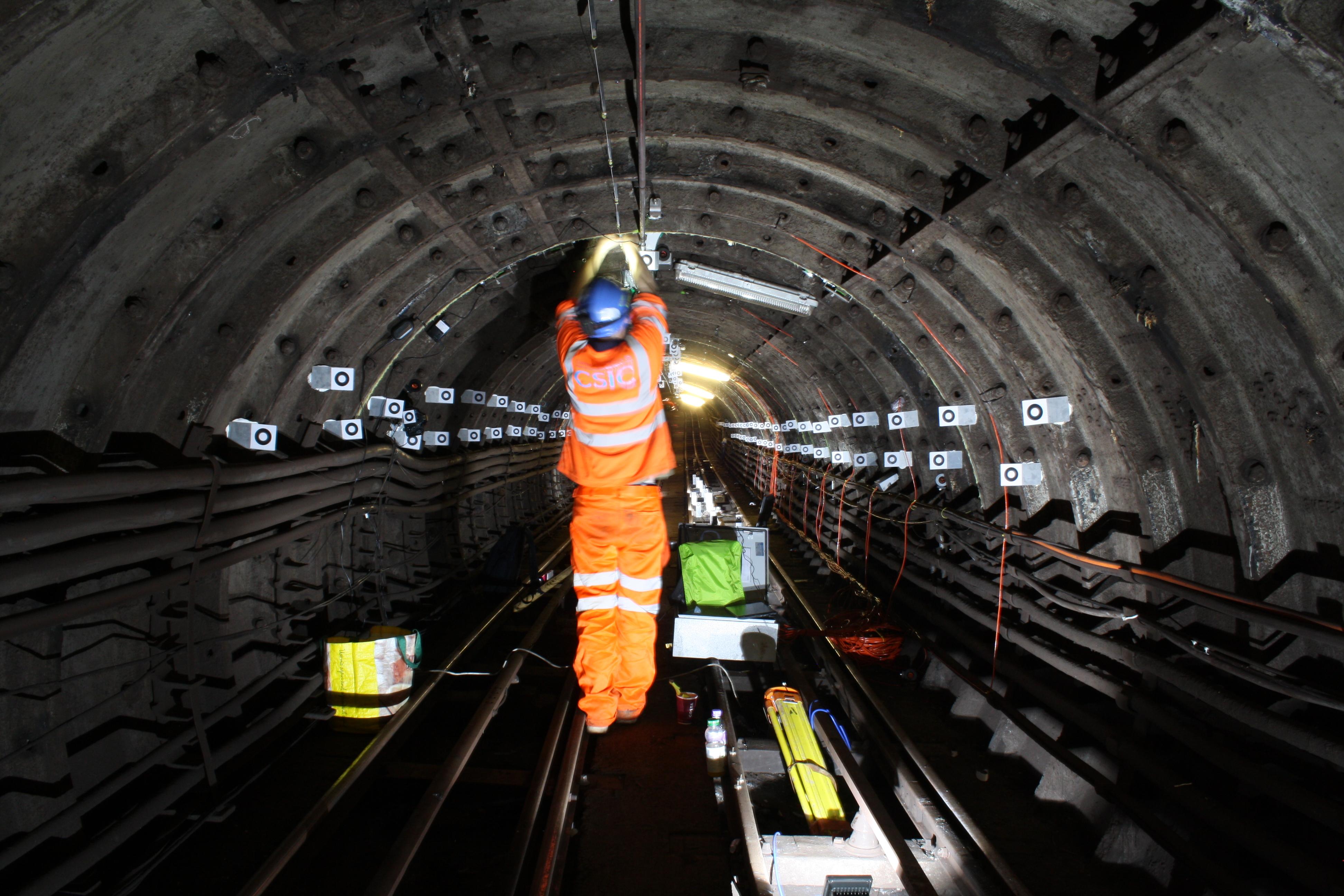
Submitted by L. Millard on Mon, 24/08/2015 - 16:43
CSattAR monitoring system, developed by CSIC’s Mehdi Alhaddad, has been shortlisted for three NCE Tunnelling & Underground Space Awards – Design Innovation of the Year, Ground Investigation and Monitoring Award and Technical Innovation of the Year.
This innovative photogrammetric system, which offers a new approach to monitoring the structural health of tunnels and infrastructure, works by processing images captured at a specified frequency for the duration of the monitoring project. To secure shortlisting for these esteemed industry awards, CSattAR had to demonstrate its durability, safety and competitive advantage.
The technical content of CSattAR makes it possible to measure movements smaller than 0.1mm using low-cost cameras. The technology, which costs a fraction of current conventional alternatives, allows engineers to record extremely precise movements and monitor numerous points along a tunnel section delivering additional deformation measurement, in real-time, that has not been available until now.
During the process of monitoring a tunnel, CSattAR will alert engineers and asset managers to any significant movement through an alarm and data-accompanied visual image, sent in real time to a smart phone, providing engineers with immediate access to the structure’s condition. A safety engineer can look at the data to assess the seriousness of the movement and, if necessary, arrange to inspect the tunnel.
CSIC is defending the prestigious Ground Investigation and Monitoring Award which commends innovation and excellence in site investigations. Last year CSIC’s Smart Tunnel project, which showcased both fibre optic and photogrammetric technologies, won the award. CSattAR has since been installed at an additional six deployments, offering a range of environments, challenges, purposes, risks and timescales by which to assess and optimise the system.
The Technical Innovation of the Year Award commends a technical innovation which has enabled a project to deliver clients improved performance or made a technique or idea possible which previously may have been ruled out.
“I feel privileged that CSattAR has been recognised by one of the tunnelling industry’s key organisations. As a tunnel engineer myself, I can see the benefits CSattAR can bring to the ways we monitor and design tunnels and I am looking forward to the system being fully commercialised and deployed,” says Mehdi.
“CSattAR’s extreme precision capabilities have allowed us to measure deformations which were not possible and/or practical to measure before, including radius of curvature and ovalisation of tunnels.”
The project shortlisted for Design Innovation of the Year is CSattAR’s Convergence Monitoring of the Central Line Influenced by Crossrail’s TBM Crossing. CSattAR was installed at an operational London Underground tunnel at Liverpool Street station to monitor the behaviour of a section of the tunnel lining at the location where a tunnel-boring machine (TBM) passed 15 metres below it during the excavation and construction of a new Crossrail tunnel. Installed in January 2015, the system remained in situ until March, monitoring the site before and after the TBM passed through.
“CSattAR can be deployed to record small or large movements and the focus for this project was to monitor the convergence of the tunnel rings under stresses caused by the TBM,” said Mehdi. “We wanted to see if we could use CSattAR in an operational tunnel where clearance is tight and installation time limited to deliver better results than other widely-used systems.”
Javier Gonzalez-Mart, Project Manager for Crossrail, said: “Crossrail London is not only about ‘Moving London Forward’ by its construction, but also looking to developments that others may utilise in the future to maintain success. In this regard Crossrail Project Wide Monitoring Project, saw the opportunity to contribute to new technologies along the way, such as the CSattAR photogrammetric technique. The potential and application of CSattAR for future projects was trialled against other standard techniques.”
Following the deployment of CSattAR at the Central Line site, Mike Grove, C704 Project Manager for Crossrail, said: “CSattAR has the technical potential to provide an alternative way of achieving very precise deformations within limited spaces and/or areas where other systems would not be practicable. CSattAR interpretation is intuitive to the user, and the post processing is very straightforward.
“CSattAR offers a cost saving because of its technical particularities and adaptability while being installed, lower maintenance and real-time inspection through the actual pictures which improves safety.”
When the data collected from the CSattAR system was analysed, the results revealed small movements in the tunnel lining, which confirmed exactly what engineers expected. CSattAR offers numerous benefits over other monitoring systems. The system:
• is quick and easy to install
• offers direct and easy interpretation of data
• is less influenced by temperature variations making readings more reliable
• is significantly cheaper than other monitoring systems on the market
• is able to measure numerous tunnel rings, not just a single ring
• is able to deliver a visual image attached to the alarm
• has met the rigorous safety criteria required for any system to be installed in a London Underground tunnel.
CSIC and CSattAR Industry Partners supporting this technology include: Crossrail, London Underground, Arup and Cern.
The winners will be announced at the NCE Tunnelling & Underground Space Awards 2015, taking place on Thursday 3 December at the Grosvenor House Hotel, Park Lane. For full details see here
